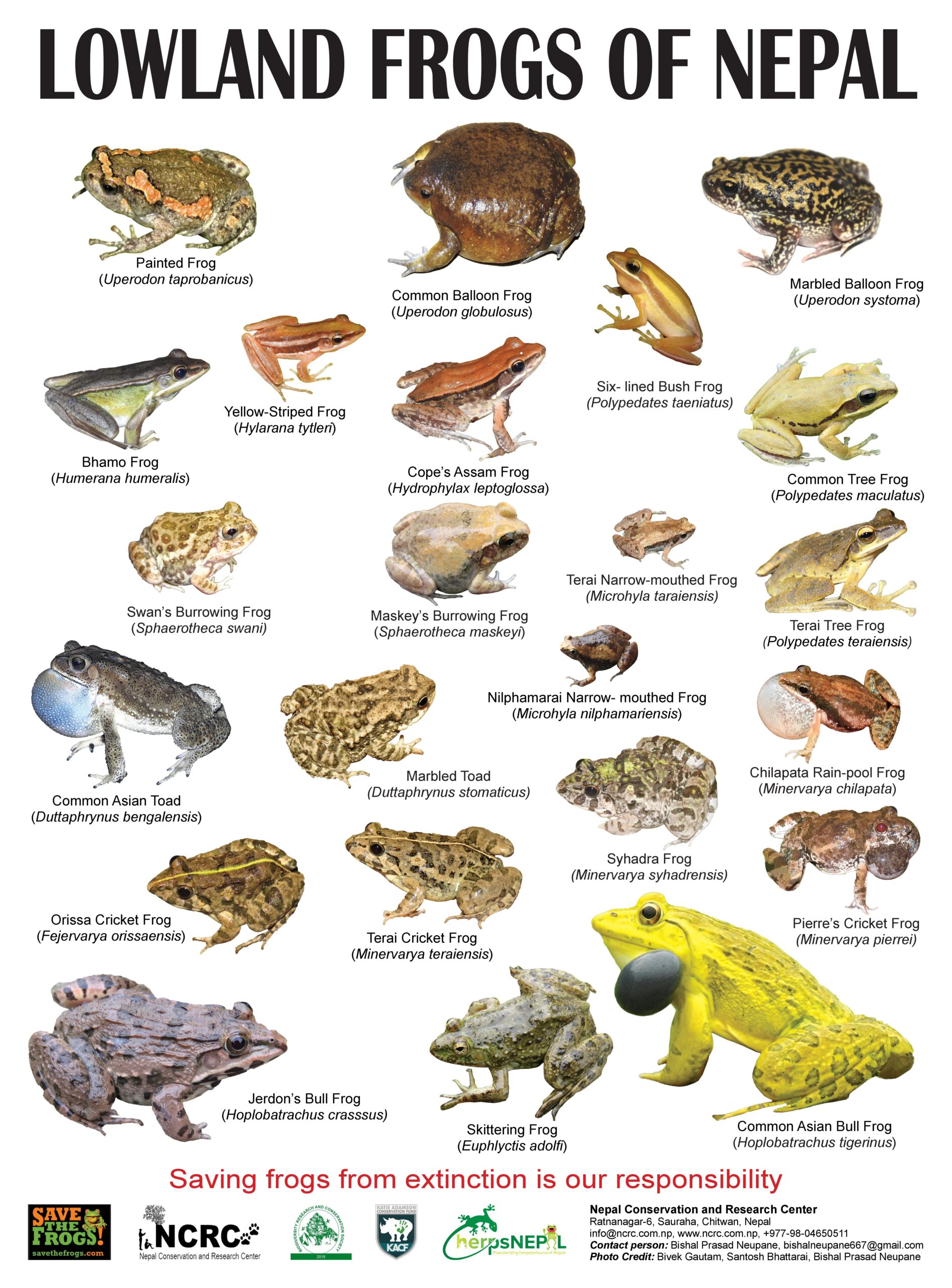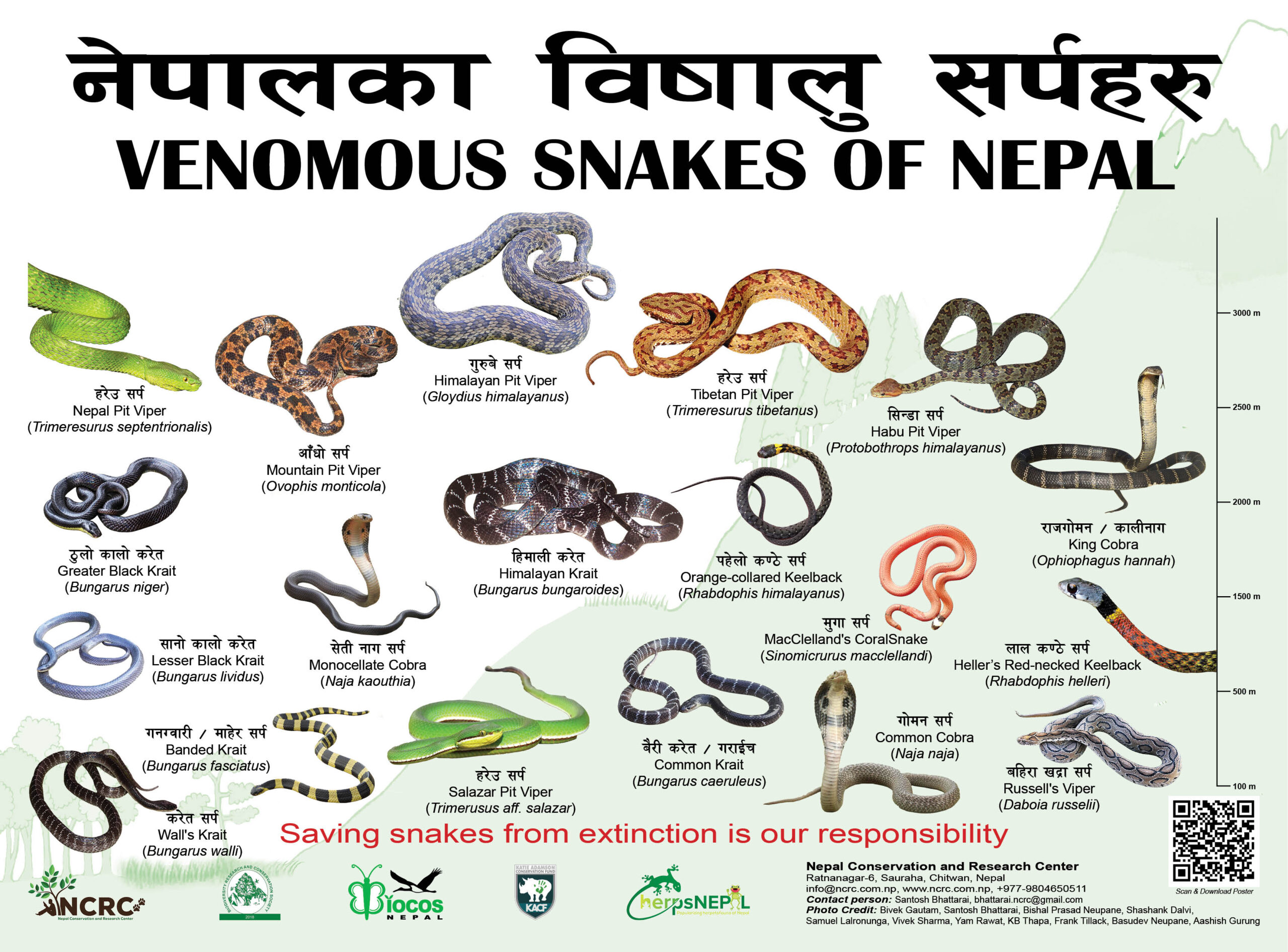
Save The Frogs Day-2024
SAVE THE FROGS! Day was marked on 28 April in Madhesh Province; jointly by Nepal Conservation and Research Center and Biodiversity Research and Conservation Society in support of Save The Frogs-an amphibian conservation organization to Bishal Prasad Neupane and Katie Adamson Conservation Fund, USA.
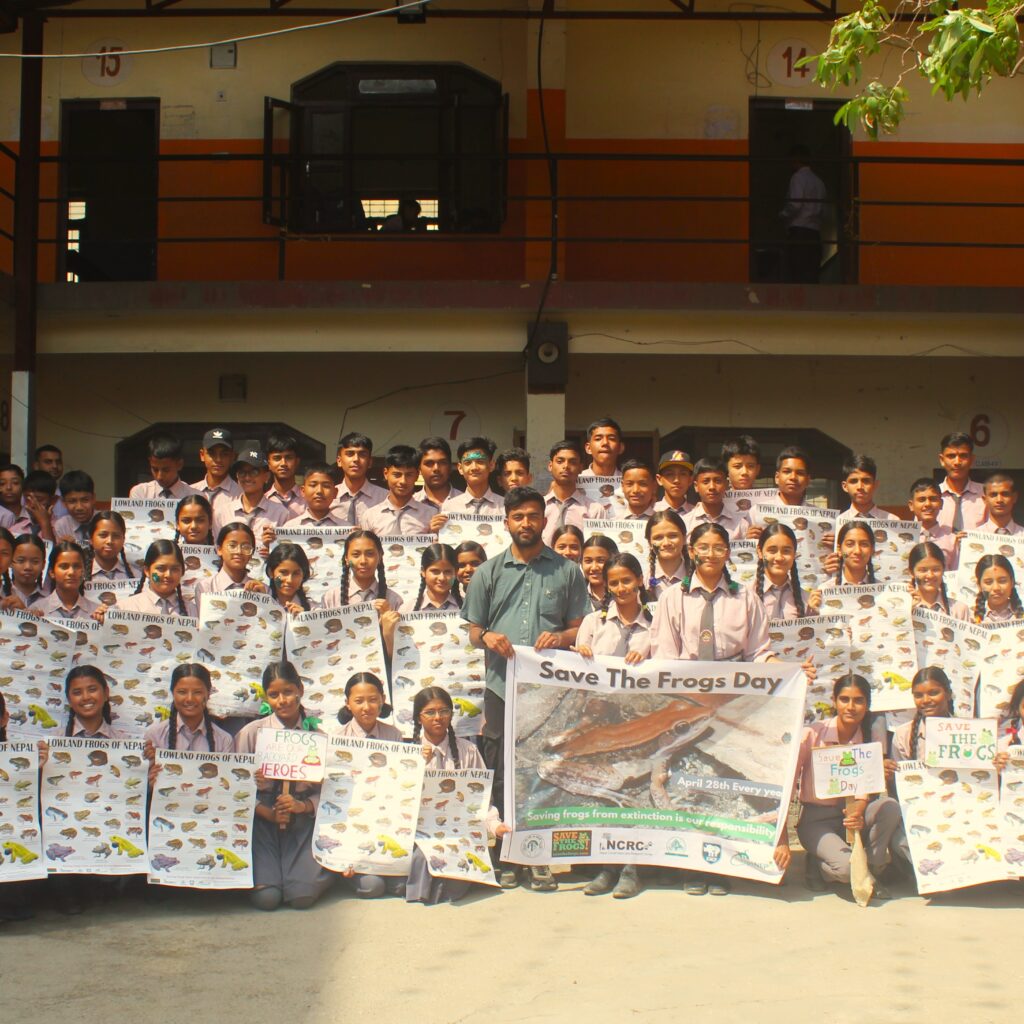

Online Photo/Video Contest:- Prior to celebrate the day; photo and video competition was held on social media herpsNEPAL Facebook group. We received total 30 submissions (28 photos and 02 videos) from different parts of Nepal. The idea of photo/video contest is to conduct social media campaign for frog conservation. All the contestants who participated the competition will receive a recently published “Lowland Frogs of Nepal Poster”.
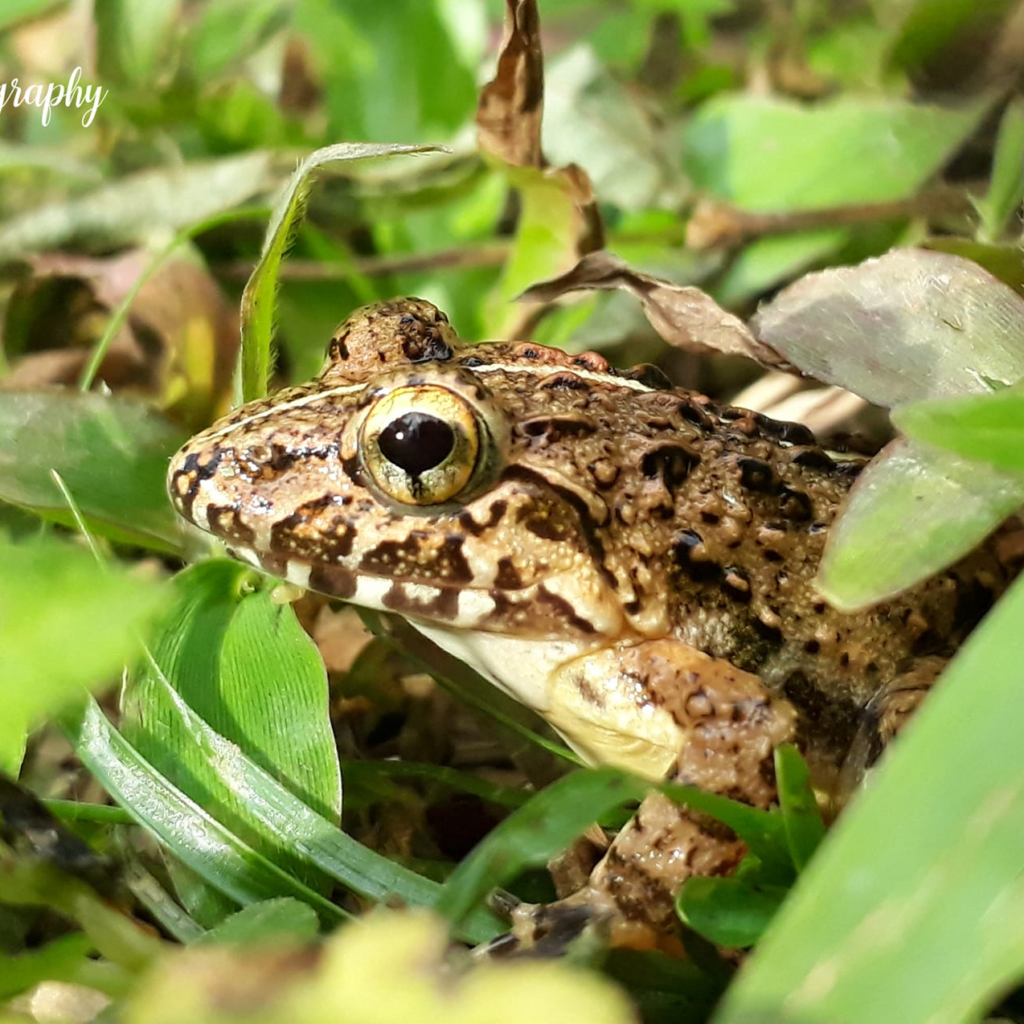
One of the photos submitted by photo contestants; Minervarya nepalensis by Kismat Neupane.
The Save The Frogs Day (28 April 2024):- The day was celebrated in Simara Public school and Thanimai Community Forest with activities such as frog conservation importance sessions; frog face painting; herping and nature walk at Thanimai Community Forest.
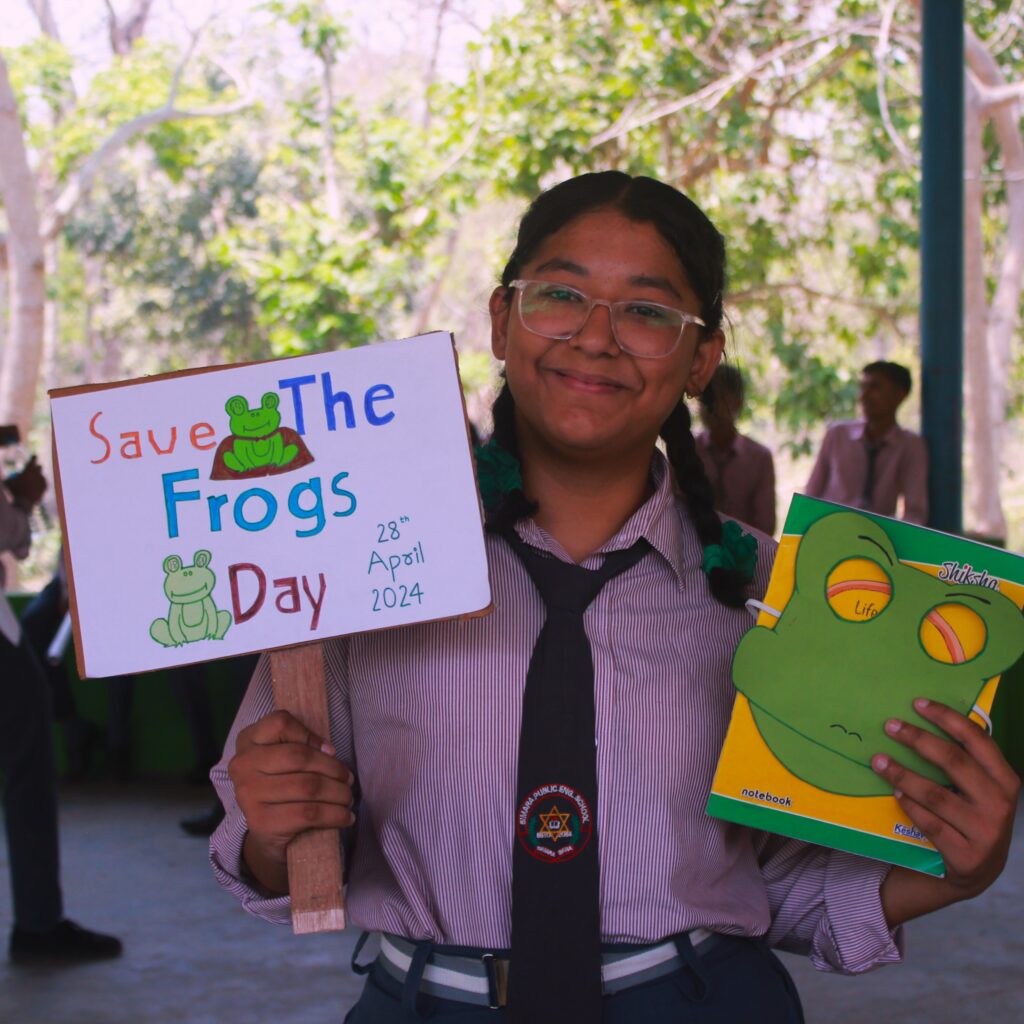

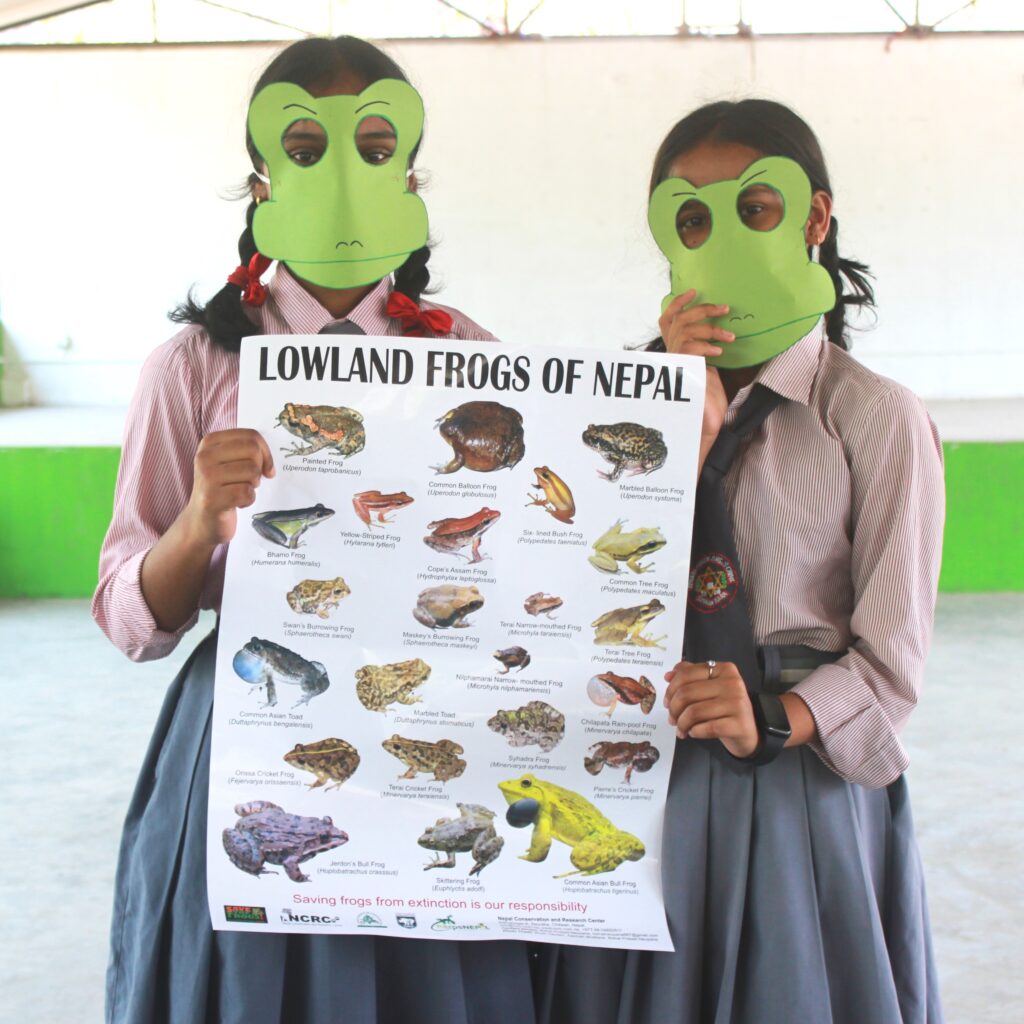
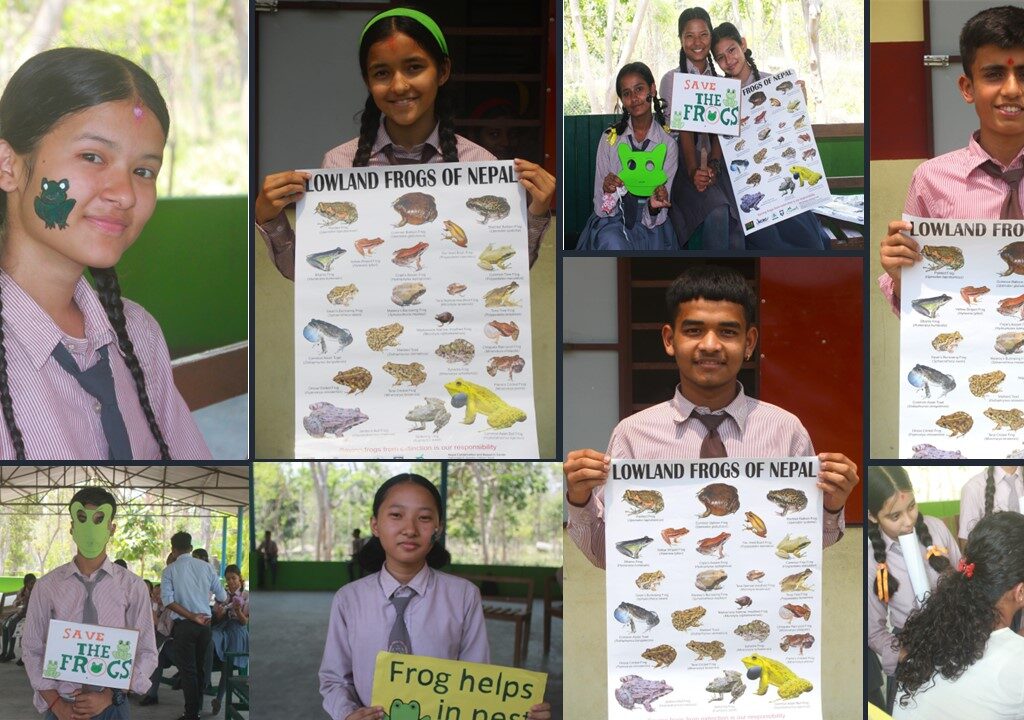
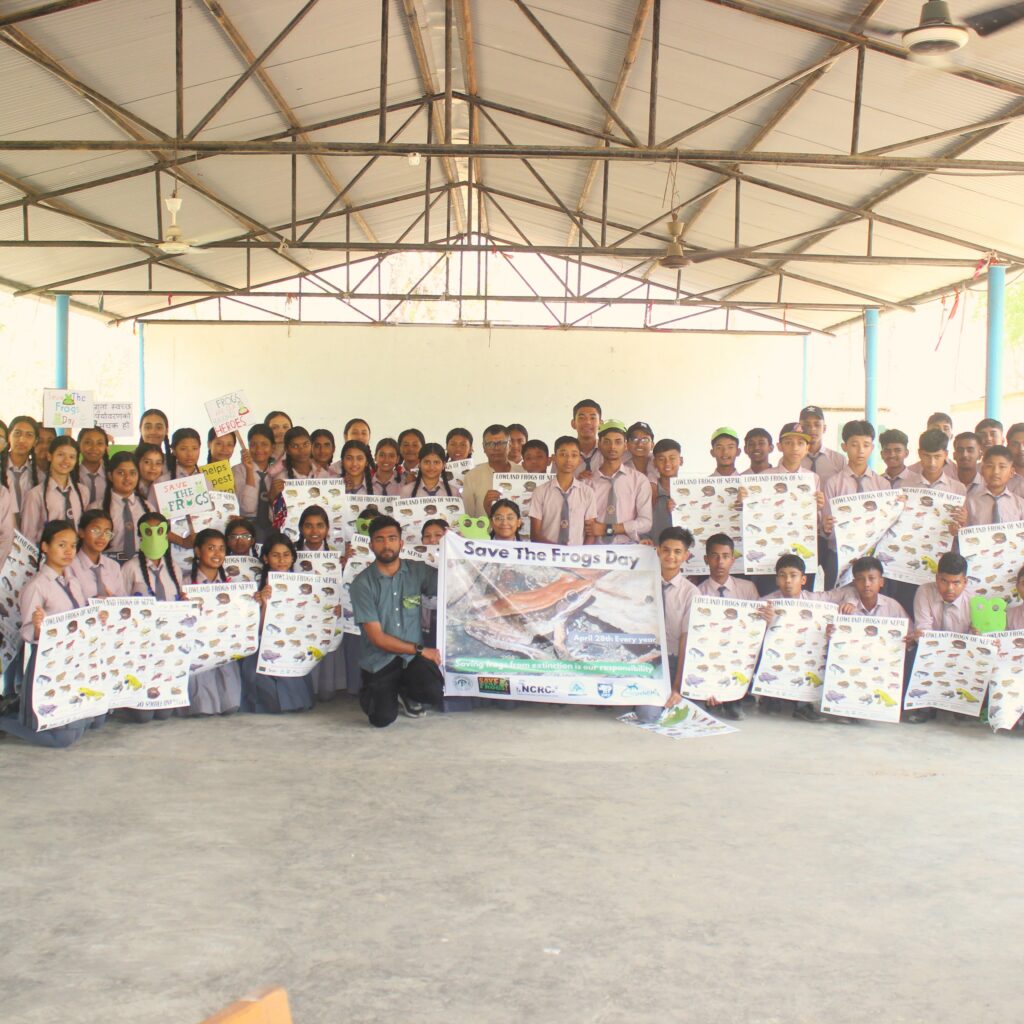
Dipendra Adhikari Memorial Conservation Grant Result Announcement
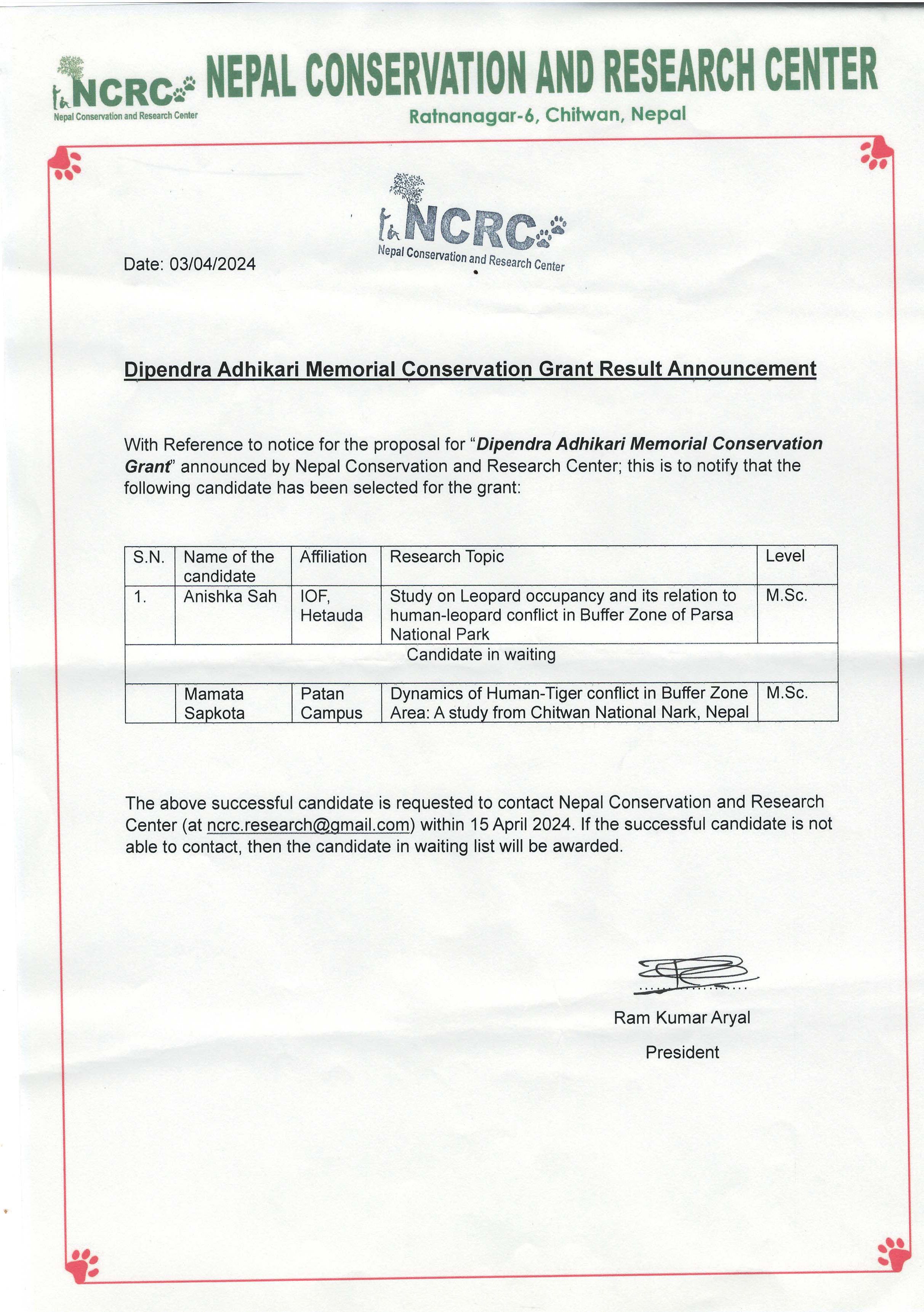
With Reference to notice (of the second announcement on 22 January, 2024) for the proposal for “Dipendra Adhikari Memorial Conservation Grant” announced by Nepal Conservation and Research Center; this is to notify that the following candidate has been selected for the grant:
| S.N. | Successful candidate | Affiliation | Research Topic | Level |
| 1. | Anishka Sah | IOF, Hetauda | Study on Leopard occupancy and its relation to human-leopard conflict in Buffer Zone of Parsa National Park | M.Sc. |
| Candidate in waiting | ||||
| Mamata Sapkota | Patan Campus | Dynamics of Human-Tiger conflict in Buffer Zone Area: A study from Chitwan National Nark, Nepal | M.Sc. | |
The above successful candidate is requested to contact Nepal Conservation and Research Center (at ncrc.research@gmail.com) within 15 April 2024. If the successful candidate is not able to contact, then the candidate in waiting list will be awarded.
Declaration: This memorial grant was possible from generous support of Dipendra’s friends and conservationists from Nepal and abroad. NCRC would like acknowledge all the supporters to make this happen.
Dipendra Adhikari Memorial Conservation Grant Notice
Second Announcement (Deadline: 15 March 2024)
With support from Dipendra’s friends and conservationists in Nepal to honor his legacy, we have established the Dipendra Adhikari Memorial Conservation Grant. This initiative aims to continue his conservation efforts by providing support to students for their project work/thesis/dissertation dedicated to exploring and safeguarding biodiversity of Nepal. The grant seeks to fund student research, initiatives, and practical conservation projects that align with Dipendra’s vision.
Eligibility
- The grant is open to individuals who are currently pursuing M.Sc. in Forestry, Environment Science, Zoology, Wildlife and allied natural resources conservation.
- The grant is available to Nepalese citizens only.
- The grantee should have his/her substantial fieldwork in Nepal.
Scope and Priorities
- Studies involving threatened and data deficient species will be given preference.
- Studies in biodiversity research in Hyaena distribution range will be prioritized.
- Studies in Terai and Siwaliks will be prioritized.
- Individuals within the age of 20-30 years will be given preference.
Grant Criteria
- Alignment with Scope and Goals: Proposals should align within the scope of the grant and a broader goals of biodiversity conservation in Nepal
- Innovation: Projects that demonstrate innovative approaches to wildlife conservation will be favored.
- Feasibility: Applicants should present a clear and feasible plan, outlining the project’s objectives, methods, and expected outcomes.
- Impact: Emphasis will be placed on projects with tangible and sustainable impacts on the targeted species or ecosystems.
Grant Amount
NRs. 50,000 (Fifty thousand Nepalese rupees); tax will be deducted as per government rules.
Grant deadline
15 March 2024
Requirements
- A project proposal (including background, significance of the project, objectives, methods, budget, timeline of activities)
- A reference/support letter from supervisor
- A CV of the student
Where to submit?
Email: ncrc.research@gmail.com
For more information contact
Nepal Conservation and Research Center
Factors affecting the occupancy of sloth bear and its detectionprobability in Parsa–KoshiComplex, Nepal
Authors: Hari Prasad Sharma, Hem Bahadur Katuwal, Bishnu Prasad Bhattarai, Shivish Bhandari, Dipendra Adhikari, Bishnu Aryal, Krishna Tamang, Amrit Neupane, Sabin KC, Basudev Baral, Surya Devkota, Dev Narayan Mandal, Sandeep Regmi
Abstract: Understanding factors associated with coexistence of human and wildlife in human-dominated landscapes is crucial for effective species conservation. Among the wildlife species, the sloth bears Melursus ursinus are found both inside and outside the protected areas of Nepal, and with increasing cases of human and bear conflicts in both areas. This highlights the necessity for a comprehensive understanding of anthropogenic and ecological factors that affect the occurrence of sloth bear. The
understanding of these factors is important for its coexistence and conservation in human-dominated areas through establishing management and conservation action plan. We studied the sloth bear’s occupancy and their coexistence in human-dominated environments with other large predators in the Parsa–Koshi Complex of Nepal using camera traps from December 2022 to March 2023. We identified the occupancy and detection probability of the sloth bear as 0.12 and 0.31, respectively.
Our analysis reveals a positive relationship between sloth bear occurrence and the presence of large predators (βpredators = 3.104 ± 0.968), such as tigers (Panthera tigris) and leopards (Panthera pardus), as well as the number of humans detected (βhuman = 1.428 ± 1.216) and canopy cover percentage (βcc = 1.002 ± 0.737). However, the number of livestock detected shows a negative interaction with the occurrence of sloth bears (βlivestock = −2.240 ± 1.467). There was insignificant interaction between sloth bear occupancy and distance to human settlements, roads, and water bodies. These findings underscore the complex dynamics between sloth bears, humans, large predators, and livestock in human-dominated
landscapes. To ensure the long-term survival of sloth bear populations and promote species conservation,
comprehensive conservation strategies that account for both ecological and socio-economic factors are essential.
Key words: camera traps, lowland, Melursus ursinus, occupancy, Parsa–Koshi
Complex, sloth bear
Understanding the perception of buffer zone communities to gharial (Gavialis gangeticus) conservation in Chitwan National Park, Nepal
Authors: Abhinaya Pathak, Ashish Bashyal, Bishwa Nath Oli, Bishnu Thapaliya, Santosh Bhattarai, Sujan Khanal, Prashamsa Paudel
Abstract:
The gharial (Gavialis gangeticus) is a Critically Endangered species found in Nepal and India. In
Nepal, gharials are distributed in Chitwan and Bardia National Parks. Gharials are highly
threatened due to various and severe anthropogenic activities. In this study, we assess the attitude,
perception and willingness of a range of stakeholders living around Chitwan National Park to
participate in gharial conservation. We conducted semi-structured questionnaire surveys with open ended questions. We interviewed national park officials (n=8), local community group members
(n=54), hoteliers (n=12), conservation partners (n=5), local elected representatives (n=38), fishing
community members (n=14), fishing net sellers (n=15) and students (n=9). Our study revealed that
respondents are familiar with existing conservation awareness activities and expressed their
willingness to participate in gharial conservation activities which can be capitalized on for future
conservation initiatives for gharials. Further, we suggest to concentrate efforts particularly on local
representatives, fishing net sellers and river dependent communities. These efforts include
community level gharial knowledge sharing and interaction program, school teaching program,
participating community in gharial conservation and its habitat management intervention and
livelihood programs.
Keywords: Gharial; Crocodilian; Chitwan National Park; Buffer Zone, Perception
Conservation of the Critically Endangered dark sitana in Nepal through education campaigns
Authors: Santosh Bhattarai, Bishal Prasad Neupane
With support from The Rufford Foundation, UK, Auckland Zoo, New Zealand, and Katie Adamson Conservation Fund, USA, a conservation and research project for the dark sitana has been jointly initiated by the Nepal Conservation and Research Center and the Mithila Wildlife Trust. Outreach education sessions were jointly conducted by these two institutions in March and April 2023. We worked with students in 15 schools and five peri-forest communities (i.e. living immediately adjacent to the forest and dependent on it). A total 1,055 students (492 boys and 563 girls) and 123 community members attended these sessions.
National Wildlife Week 2023 marked for Dark sitana(Sitana fusca) conservation in Nepal
Our team members were invited to conduct sessions on “Herpetofauna Conservation and Research
Techniques” by the Agriculture and Forestry University, Katari College. We taught the university
students about the status of Nepalese amphibians and reptiles, identification keys, field research techniques, and photographic techniques. We stressed on key conservation issues for critically endangered species such as the Dark Sitana (Sitana fusca) and how the students can get involved in the ongoing research and conservation project for the same. This work is funded by The Rufford Foundation UK, Katie Adamson Conservation Fund, USA and Auckland Zoo, New Zealand.
Details https://drive.google.com/file/d/1_T5432jKdYFNlsbhkx3l30gF0cQy5SGr/view
Conservation Awareness for Dark Sitana (Sitana fusca) in Nepal
Authors: Santosh Bhattarai, Bishal Prasad Neupane

The Dark Sitana (Sitana fusca) is an agamid lizard endemic to Nepal, only known from its type locality in Madhesh province. Due to increased habitat loss, forest fragmentation, and urbanisation in its type locality, this species is now ‘critically endangered’. There is also very limited
information on its ecology and distribution. To help this, the Nepal Conservation and Research Center
(NCRC), with support from The Rufford Foundation, Auckland Zoo, and Katie Adamson Conservation Fund, initiated a research and conservation project focusing on the Dark Sitana. Outreach and community engagement programmes, conducted jointly by NCRC and the Mithila Wildlife Trust, were also major components of this project. During these sessions, we taught students in ten schools and in three peri-forest communities (communities that live immediately adjacent to the forests, and are dependent on forest resources). A total of 671 students (268 boys and 403 girls) and 71 community members attended our sessions, wherein a ‘conservation poster’ of the Dark Sitana was also distributed. As a result of our outreach programmes, people, who previously had negative perceptions about this species, understood that these lizards are an important component of their ecosystem, and that they do not harm humans (in many Nepalese societies, lizards are considered to be relatives of snakes and deadly venomous; folklores also portray these reptiles to be lazy and dishonest).

Some of the peri-forest community members also promised to inform us whenever they spotted the
species to help understand its distribution better. We found that our sessions were well-received among students and community members. Word spread and we started receiving invitations from several other schools for outreach sessions and requests for printed copies of the poster. Such interest and enthusiasm makes us look forward to conducting such sessions more often, including during Nepal’s national wildlife week, in collaborations with other organizations on ground. After all, the goal is to share knowledge and develop sustainable conservation measures for the Dark Sitana in Nepal.

Link: https://drive.google.com/file/d/17AcEbRlXXpPlXuaHeyvoEspzRBZEsYY6/view

